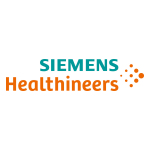At RSNA, Siemens Healthineers Debuts SOMATOM On.site To Enable CT Head Exams at Patient’s Bedside

RSNA 2019 in Chicago: Hall A, North Building, Booth 7530
- Mobile CT scanner enables patient to remain in the ICU while connected to monitors and devices
- Allows staff to remain in the ICU rather than transport patient to radiology
CHICAGO–(BUSINESS WIRE)–At the 105th Scientific Assembly and Annual Meeting of the Radiological Society of North America (RSNA), Dec. 1-6 at McCormick Place in Chicago, Siemens Healthineers debuts the SOMATOM On.site,¹ a mobile head computed tomography (CT) scanner that changes the standard practice of transporting a critically ill patient from the intensive care unit (ICU) to the radiology department for a CT scan. With the SOMATOM On.site, the radiologic technologist can perform a CT head examination directly at the patient’s bedside, potentially eliminating costly patient transports with high staffing requirements and potential risk to the patient. In this way, the SOMATOM On.site transforms care delivery and improves the patient and staff experience.
“The SOMATOM On.site is a fundamentally new approach for CT head scans of intensive care patients,” says Philipp Fischer, Head of Computed Tomography, Siemens Healthineers. “It offers a combination of mobility, ease of use, and the image quality customers have come to expect from SOMATOM CT scanners. At the same time, it allows healthcare providers to use their staff and their permanently installed CT fleet even more effectively.”
The SOMATOM On.site reimagines head imaging for ICU patients. In the patient’s room, the technologist removes the headboard from the bed while the patient remains in bed, connected to monitors and devices. An integrated shoulder board and head holder offer patient support and consistent positioning in the scanner at isocenter, providing optimal image quality. The system’s new intelligent user interface, myExam Companion, helps the technologist navigate through the examination for consistent results, regardless of experience level. Following image acquisition, the technologist slides the patient down in the bed from the headboard, and the CT scan is sent automatically to the picture archiving and communication system (PACS). This streamlined process typically takes minutes, requires minimal staffing, and reduces potential risk for the patient. The integrated drive camera in the front of the scanner offers real-time viewing on the built-in touch display, enabling easy maneuvering of the scanner. The smart driving concept with the motorized trolley and ergonomic handle helps enable precise, intuitive positioning even in small spaces.
Thanks to the SOMATOM On.site’s unique telescopic gantry design, the radiation source and gantry move away from the patient during scanning to reduce scatter radiation, while the base of the mobile scanner remains stationary. Since only the gantry moves during scan acquisition, the potential exists for improved workflow and reduced incidents of motion-induced image artifacts. Additionally, protective curtains can be attached to cover the front and back of the gantry openings, further reducing scatter radiation for staff and neighboring patients.
¹ The SOMATOM On.site CT system is pending 510(k) clearance and is not yet commercially available in the United States.
Siemens Healthineers AG (listed in Frankfurt, Germany: SHL) is shaping the future of Healthcare. As a leading medical technology company headquartered in Erlangen, Germany, Siemens Healthineers enables healthcare providers worldwide through its regional companies to increase value by empowering them on their journey towards expanding precision medicine, transforming care delivery, improving the patient experience, and digitalizing healthcare. Siemens Healthineers is continuously developing its product and service portfolio, with AI-supported applications and digital offerings that play an increasingly important role in the next generation of medical technology. These new applications will enhance the company’s foundation in in-vitro diagnostic, image-guided therapy, and in-vivo diagnostics. Siemens Healthineers also provides a range of services and solutions to enhance healthcare providers’ ability to provide high-quality, efficient care to patients. In fiscal 2019, which ended on September 30, 2019, Siemens Healthineers, which has approximately 52,000 employees worldwide, generated revenue of €14.5 billion and adjusted profit of €2.5 billion.
Further information is available at www.siemens-healthineers.com.
Contacts
For journalists
Jeff Bell
Phone: (484) 868-8346; E-mail: jeffrey.t.bell@siemens-healthineers.com

